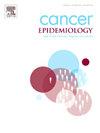调查影响Gardasil 4、Cervarix和Gardasil 9疫苗在女性中的有效性的因素:一项系统综述
IF 2.4
3区 医学
Q3 ONCOLOGY
引用次数: 0
摘要
目前,预防人乳头瘤病毒(HPV)感染的最佳方法是接种疫苗。本系统综述旨在回顾影响Gardasil- 4、Cervarix和Gardasil-9疫苗减少9-45岁女性生殖器前病变和降低宫颈癌高危基因型疗效的因素的最新发现,并检查在这方面进行的研究在各地区的分布情况。在这项研究中,仅使用疫苗的名称,并且仅根据名称对疫苗进行检查。世卫组织的名称仅用于暗示在世界范围内分配和获得卫生服务,而不是就不同组织的疫苗批准而言。方法利用PubMed、Scopus和Web of Science对每种疫苗进行检索。从上述数据库中分别获得了540、257和191项关于Gardasil 4、Cervarix和Gardasil 9疫苗的独特研究。应用纳入和排除标准,对Gardasil 4的17项研究、Cervarix的7项研究和Gardasil 9的2项研究进行综述。结果本研究表明,在世卫组织的各个区域内,尚未进行全面的有效性研究,特别是在东地中海区域和东南亚区域,未记录任何有效性研究。因此,这些区域需要进行有效性研究。因此,建议在世卫组织划定的EMR和SEAR区域开展关于乳头瘤病毒疫苗接种有效性的调查。此外,研究表明,在不同的国家,年龄、性别、人口中流行的基因型、文化、开始性活动的年龄、卫生保健基础设施和及时筛查等一系列因素可以显著影响疫苗的有效性。此外,在疫苗接种覆盖率不理想的国家,强大的卫生保健系统加上专业检测的实施和及时的随访可以大大有助于癌症预防。调查结果证实至少接种了一剂疫苗。研究显示,在没有接种疫苗的情况下,严格的医疗保健制度可能有助于减少宫颈癌的发病率。此外,在这些国家,加强卫生保健系统、筛查方案和公众意识在提高疫苗接种效果方面发挥着至关重要的作用。总的来说,较低的接种年龄(9-15岁)、减少接种前的性接触、在癌前病变发病前接种疫苗以及遵守推荐的疫苗接种计划与提高疫苗有效性相关。此外,疫苗接种剂量的有效性与年龄有关,因为一剂疫苗对15岁或15岁以下的人可能有效。结论年龄、性别、人群常见基因型、文化、性起始年龄、卫生保健制度、推荐筛查时间等因素对疫苗的有效性有重要影响。此外,建议在发展中国家,单剂疫苗接种计划对15岁或15岁以下的儿童就足够了。此外,在这些国家,改善护理系统、筛查系统和提高认识在提高疫苗接种有效性方面发挥着重要作用。还建议在世卫组织所涵盖的EMR和SEAR区域进行关于乳头瘤疫苗接种有效性的研究。根据纳入标准,所有国家都被纳入研究;因此,个体基因型的影响取决于地理区域,可能会影响疫苗的有效性。根据指南可以接种疫苗的9-45岁个体被纳入研究。年龄是影响疫苗效力的因素之一。此外,根据包括各国卫生部在内的保健组织的政策,在不同的地理区域提供各种保健服务。因此,女性接种疫苗发生在不同的年龄,接种疫苗的年龄越大,疫苗的有效性就越低。卫生保健系统较差的国家获得疫苗的机会较少,这可能影响疫苗的有效性和群体免疫力。本文章由计算机程序翻译,如有差异,请以英文原文为准。
Investigating factors affecting the effectiveness of Gardasil 4, Cervarix, and Gardasil 9 vaccines considering the WHO regions in females: A systematic review
Background
Currently, the best method for preventing Human Papilloma Virus (HPV) infection is vaccination. The present systematic review aims to review the latest findings on the factors affecting the efficacy of Gardasil 4, Cervarix, and Gardasil-9 vaccines on reducing pregenital lesions and reducing high-risk genotypes of cervical cancer in females aged 9–45 years and to examine the distribution of studies conducted in this regard in regions. In this study only the names of the vaccines were used and the vaccines were examined only according to the name. The name of WHO is only used to imply the distribution and access to health services in the world and not in terms of the vaccine approval in different organizations.
Methods
A search for each vaccine was performed using PubMed, Scopus, and Web of Science. Five hundred and forty, 257, and 191 unique studies were obtained from the aforementioned databases for Gardasil 4, Cervarix, and Gardasil 9 vaccines, respectively. After applying the inclusion and exclusion criteria, 17 studies on Gardasil 4, seven studies on Cervarix, and two studies on Gardasil 9 were reviewed.
Results
This study indicated that within various regions of the WHO, comprehensive effectiveness studies have not been conducted, and specifically within the Eastern Mediterranean Region (EMR) and South-East Asia Region (SEAR), no effectiveness studies have been recorded. Consequently, these regions necessitate the execution of effectiveness studies. Therefore, it is advisable to undertake investigations regarding the effectiveness of papillomavirus vaccination in the EMR and SEAR regions as delineated by the WHO.
Moreover, it was demonstrated that in diverse nations, an array of factors such as age, gender, prevalent genotypes within the population, culture, the age at sexual activity initiation, the healthcare infrastructure, and timely screening can significantly impact the effectiveness of the vaccine.
Furthermore, in nations with suboptimal vaccination coverage, a robust healthcare system coupled with the implementation of specialized testing and prompt follow-up can substantially aid in cancer prevention. The outcomes of this investigation confirm the administration of at least one dose of the vaccination. It reveals that in the absence of vaccination, a stringent healthcare system may contribute to the reduction of cervical cancer incidence.
Additionally, in these nations, enhancements in healthcare systems, screening protocols, and public awareness play a crucial role in augmenting vaccination effectiveness. Collectively, a lower age at the time of vaccination (9–15 years), reduced sexual exposure prior to vaccination, vaccination prior to the onset of precancerous lesions, and adherence to the recommended vaccination schedule are associated with heightened vaccine effectiveness. Furthermore, the effectiveness of the vaccination dose is age-dependent, as one dose can be effective for individuals aged 15 years or younger.
Conclusions
Various factors, including age, sex, common genotypes in population, culture, age at sexual initiation, healthcare system, and screening at recommended time, can play a significant role in vaccine effectiveness. Additionally, it is suggested that in the developing countries, a single dose vaccination program is sufficient for children aged 15 years or younger. Also in these countries, improving the care system, screening system, and awareness play a significant role in enhancing the effectiveness of vaccination. It is also recommended that studies on the effectiveness of the papilloma vaccination in the EMR and SEAR regions covered by the WHO to be conducted. According to the inclusion criteria, all countries were included in the study; thus, the effects of the individual’s genotype, which depends on the geographical region, can affect the vaccine effectiveness. Individuals aged 9–45 who can receive the vaccine according to the guidelines, were included in the study. Age is one of the factors affecting the vaccine effectiveness. Also, according to the policies of healthcare organizations, including the Ministries of Health of countries, various health services are provided in different geographical regions. Therefore, females's access to the vaccine occurs at different ages, and the effectiveness of the vaccine decreases by increasing the age at which the vaccine is received. Countries with poor healthcare system have less access to the vaccine, which can affect the effectiveness of the vaccine and herd immunity.
求助全文
通过发布文献求助,成功后即可免费获取论文全文。
去求助
来源期刊

Cancer Epidemiology
医学-肿瘤学
CiteScore
4.50
自引率
3.80%
发文量
200
审稿时长
39 days
期刊介绍:
Cancer Epidemiology is dedicated to increasing understanding about cancer causes, prevention and control. The scope of the journal embraces all aspects of cancer epidemiology including:
• Descriptive epidemiology
• Studies of risk factors for disease initiation, development and prognosis
• Screening and early detection
• Prevention and control
• Methodological issues
The journal publishes original research articles (full length and short reports), systematic reviews and meta-analyses, editorials, commentaries and letters to the editor commenting on previously published research.
 求助内容:
求助内容: 应助结果提醒方式:
应助结果提醒方式:


